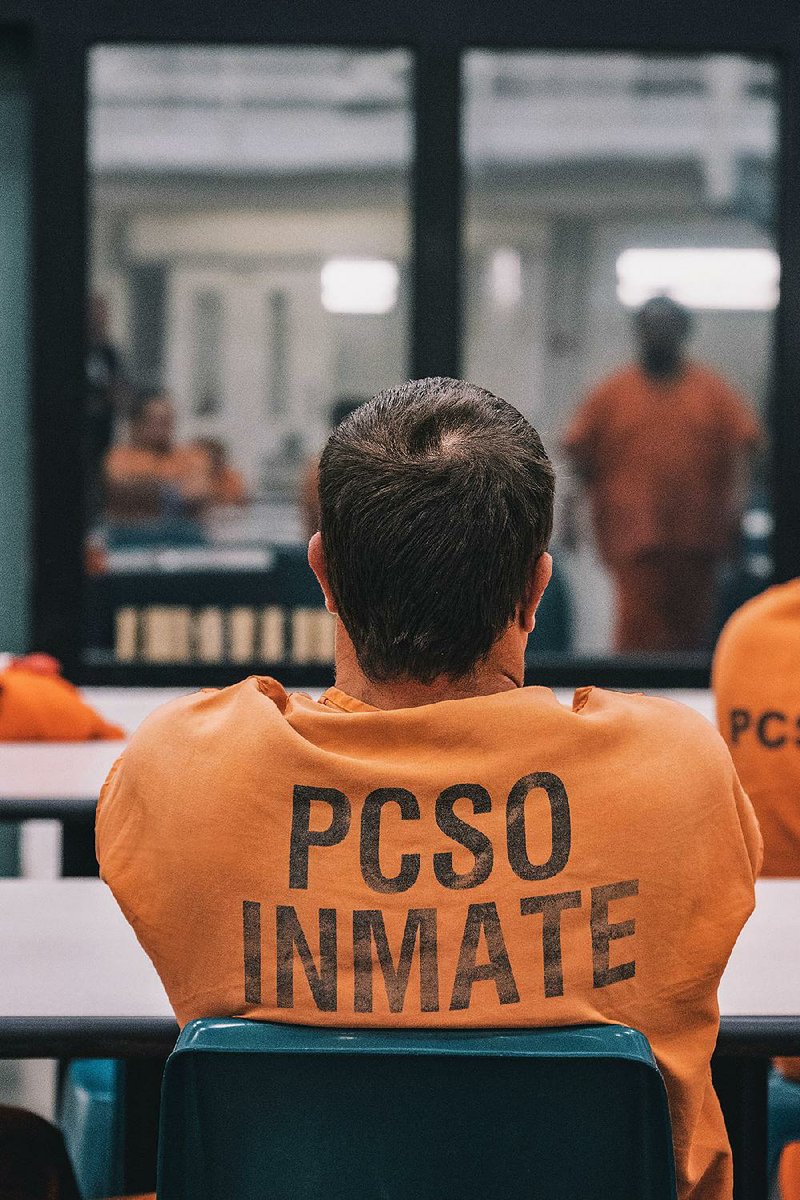Garrett has a lot going for him, at least in the eyes of his girlfriend, Johnna. He's good-looking and fit. He's romantic and attentive.
In the minus column, he's a felon serving a sentence for grand theft, grand theft auto, credit card fraud, selling stolen property, drug possession and burglary. But did we mention he is romantic and attentive?
Those last two attributes were more than enough for Johnna -- and for the viewers of Love After Lockup, the WE TV show on which Garrett was one of the first-season stars.
Equal parts dating show and slice-of-life documentary, Love After Lockup follows six couples as they contemplate weddings and post-release living arrangements. The show was the fastest-growing new cable series for 2018 and it returned for a second season Dec. 7.
When Love After Lockup debuted in January, it entered a crowded field of prison-theme reality programs. Over the past decade, there have been shows about jails (Jail, 60 Days In) and county jails (Lockup: County Jails); maximum-security prisons (Hard Time) and megajails (Louis Theroux: Miami Mega Jail); female inmates (Girls Incarcerated) and their kids (Born Behind Bars); hardened lifers (Lockdown) and newbie guards (Behind Bars: Rookie Year). Locked Up Abroad, on Nat Geo, is still going strong, 12 seasons in.
The popularity of these shows isn't tough to figure out: They're cheap to produce (no expensive sets to build, or professional actors to pay), and promise voyeuristic thrills and morality tales where no felon goes unpunished, and then some.
Elizabeth Barfoot Christian, a professor of media and communication at Louisiana College who has written about prison reality shows, believes that many of them, such as Louisiana Lockdown, which was set in nearby Angola Prison, feed into and even promote negative stereotypes.
Christian notes that many of the newer criminal justice-theme programs, from dramas (Netflix's Orange Is the New Black) to podcasts (Serial), humanize the characters in ways that previous shows did not. One possible reason: The United States has the highest incarceration rate in the world (655 inmates for every 100,000 people, according to the World Prison Brief, a database maintained by the Institute for Criminal Policy Research at Birkbeck, University of London), which means that there's a chance viewers know someone who is in prison, or has been.
Love After Lockup is part of this trend toward kinder, gentler prison shows. The show's target audience of women from 25 to 54 nearly doubled over the course of the season; the series finale, "Prison Cells to Wedding Bells," drew nearly 725,000 viewers.
And at first glance, the show seems similar to a batch of other prison-based shows, ilcluding Lifetime's Prison Wives Club and Investigation Discovery's Prison Wives. But the show has one key attribute the others lack: On Love After Lockup, the inmates actually get out (or at least most do). And unlike other prison shows, which rarely leave the lockups and tend to focus on the most unsavory aspects of prison life, Love After Lockup is all about, well, love or what passes for it.
The first season was marked by unwise acts (over a period of three years, Scott sends Lizzie, one of the show's two female inmates, $90,000, which she spends on meth and heroin, among other things) and threats from jealous lovers ("I will hurt a chick," Andrea says, "and I say that in the name of Jesus Christ, amen"). There are questions from nosy friends ("Has he hurt any children?") and inquisitive family members ("Have you ever gotten shanked?").
This season stars four new couples, as well as two couples from last season whose romances were stymied by delayed prison release dates. One newcomer, Caitlin, is a 32-year-old administrative assistant in Washington who falls in love with Matt, a 28-year-old inmate she met through a "strictly platonic" Craigslist ad. Most of Caitlin's family doesn't know about her new beau, who's in prison for possession of a firearm, stolen property and eluding police. And although their prison meetings were limited to four visits -- albeit all-day ones -- she doesn't see her relationship as all that different from other couples.
"We dated," Caitlin said. "Maybe not to society's norms. But we spent five months communicating day in and day out. We took time to get to know each other. I get that it might not look normal to everybody else."
And who says normal is necessarily all that great? Farrell points out that prisoners can spend more time wooing the person on the outside. "They have a lot of time to write letters. Whereas someone that you or I might date, who has a job and responsibilities, they're not sitting there going, oh, I think I'll write Kate a poem today."
One returning civilian is Angela, 45, who was stood up by her boyfriend, Tony, on his supposed release date at the end of the first season, which left Angela wondering if she had been played. That's another not-uncommon element of the show: For many prison couples, it's the partner on the outside who's sweating things out, hoping their lover on the inside is telling the truth. "He is a manipulator," Angela said.
And yet, there's something about the guy that charms. "One of the sweetest things he ever sent me was a half-dozen roses he made out of toilet tissue, and colored with Kool-Aid from prison," she said.
In the end, the producers insist, the series is really all about love stories and second chances. "Sometimes you do something stupid and you get a bad break," said Marc Juris, president of WE TV. "But that doesn't mean you're not a good person and you don't deserve love."
Style on 12/11/2018

